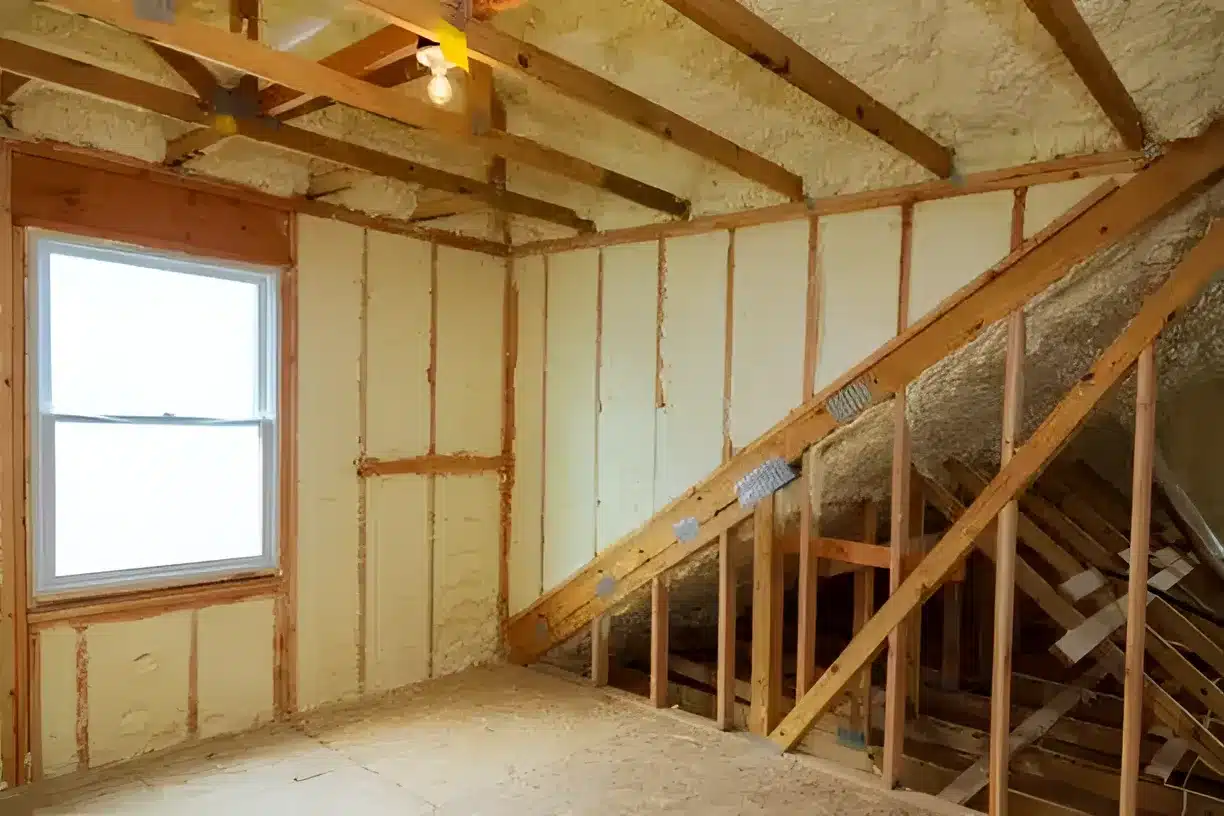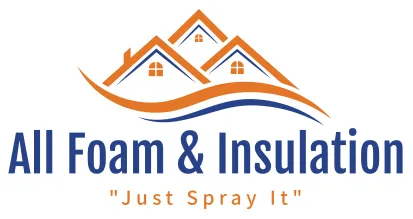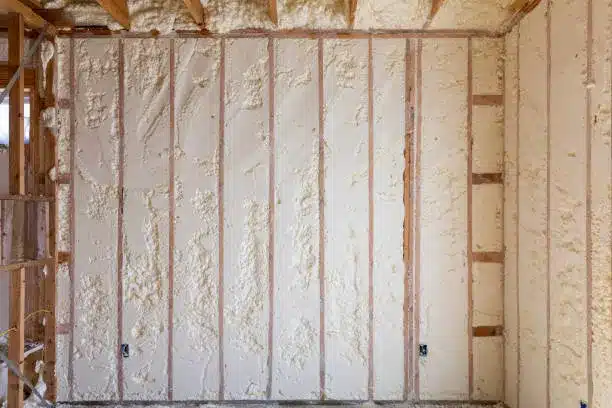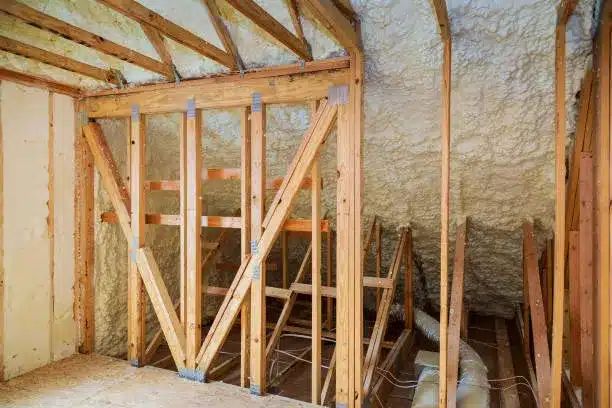Ashland homes do need effective insulation in winter, as temperatures drop to an average low of 30°F with winter highs reaching only 44°F. Spray foam insulation provides superior thermal protection compared to traditional materials, offering excellent air sealing capabilities that prevent heat loss during cold winter months. Properties with spray foam insulation typically see up to 50% reduction in energy costs while maintaining consistent indoor temperatures.
Ashland experiences a Mediterranean climate with distinct seasonal variations, receiving approximately 22 inches of rain annually and averaging 4 inches of snow. All Foam & Insulation draws from extensive regional experience working with these specific climate conditions to provide authoritative guidance on winter insulation requirements for local homeowners.
Understanding Ashland’s Winter Climate Challenges
Winter temperatures in Ashland fluctuate significantly, with average highs during December reaching only 42.4°F and lows dropping to 28°F. December typically brings the highest rainfall of the year at 3.46 inches, combined with snowfall averaging 4.17 inches. These conditions create substantial heating demands for residential properties.
The region’s elevation at approximately 2,000 feet above sea level, combined with surrounding mountain ranges, creates unique thermal challenges. Ashland sits in the rain shadow of surrounding mountains, resulting in lower precipitation than coastal Oregon areas but still experiencing pronounced seasonal temperature variations.
Spray Foam Insulation Performance in Winter Conditions
Spray foam insulation creates exceptional thermal resistance by forming millions of tiny air-filled cells that prevent heat transfer. Closed-cell spray foam provides the highest R-value per inch of any insulation material while creating an effective moisture barrier.
Winter-Specific Advantages
During cold winter months, spray foam acts as a thermal barrier, preventing the escape of heated air from interior spaces. The material’s expanding properties ensure complete coverage around irregular surfaces, pipes, and structural elements where traditional insulation often leaves gaps.
Bonus Tip: Proper substrate preparation becomes critical in winter applications – surfaces must be maintained at minimum 60°F for optimal adhesion and curing.
Technical Specifications for Winter Performance
| Insulation Type | R-Value per Inch | Air Sealing Capability | Moisture Resistance | Winter Application Suitability |
|---|---|---|---|---|
| Closed-Cell Spray Foam | R-6.0 to R-7.0 | Excellent | Superior | Optimal for exterior applications |
| Open-Cell Spray Foam | R-3.5 to R-4.0 | Very Good | Moderate | Interior walls and sound dampening |
| Fiberglass Batt | R-3.1 to R-3.8 | Poor | Low | Limited effectiveness with air gaps |
| Blown-In Cellulose | R-3.2 to R-3.8 | Fair | Moderate | Settling issues in cold weather |

Seasonal Energy Efficiency Benefits
Spray foam insulation retains warmth during winter months while reducing HVAC strain and energy consumption. Properties with professionally installed spray foam often experience approximately 50% savings on heating costs.
Performance Data Analysis
According to greenhouse gas inventory data, residential energy accounts for 24% of Ashland’s emissions, making energy efficiency improvements particularly valuable. Homes with comprehensive spray foam insulation demonstrate measurable improvements in thermal performance during winter months.
| Performance Metric | Traditional Insulation | Spray Foam Insulation | Improvement Percentage |
|---|---|---|---|
| Heat Loss Prevention | 65-75% | 90-95% | 25-30% better |
| Air Infiltration Control | 40-60% | 85-95% | 45-55% better |
| Moisture Management | 20-40% | 80-90% | 60-70% better |
| Energy Efficiency | 70-80% | 90-98% | 20-28% better |
Bonus Tip: Oregon residents may qualify for significant tax benefits when installing insulation that reduces carbon footprint.
Things to Consider Before Making a Decision
Winter timing affects installation feasibility and material performance. Spray foam requires storage and application within 70-80°F temperature ranges for optimal quality. Professional contractors must maintain proper environmental conditions during winter installations.
Existing home conditions influence insulation effectiveness. Properties with significant air leaks, inadequate vapor barriers, or moisture issues require comprehensive evaluation before spray foam application. Professional assessment ensures optimal results by identifying areas requiring specific attention.
Budget considerations extend beyond initial material costs. While spray foam represents higher upfront investment compared to traditional materials, long-term energy savings typically offset initial expenses through reduced heating bills.
Building code compliance requires attention to local requirements. Oregon energy codes specify minimum R-value requirements and proper installation procedures for various insulation materials.
Professional Insulation Services Available
All Foam & Insulation provides comprehensive solutions tailored to winter climate requirements:
Closed-Cell Spray Foam: Premium exterior insulation offering maximum thermal protection and moisture resistance for challenging winter conditions.
Open-Cell Spray Foam: Interior application solution providing excellent thermal performance with sound dampening benefits for comfortable living spaces.
Blown-In Insulation: Cost-effective option for attic spaces requiring enhanced thermal resistance during heating season.
Membrane Roofing: Protective barrier systems preventing heat loss through roof assemblies while managing winter moisture concerns.
Common Questions About Winter Insulation Decisions
When should homeowners schedule spray foam installation for winter readiness?
Fall scheduling allows optimal preparation before heating season demands. Professional contractors can maintain proper application conditions while homeowners benefit from immediate thermal improvements.
How does spray foam perform during Ashland’s wet winter months?
Closed-cell formulations provide superior moisture barriers that prevent condensation issues while maintaining thermal performance throughout wet weather periods.
What areas of homes benefit most from spray foam during winter?
Attic spaces, basement walls, and crawl spaces typically show greatest improvements. These areas experience significant heat loss during cold weather and benefit from spray foam’s air sealing capabilities.
Can spray foam installation occur during winter weather?
Professional installation remains possible with proper environmental controls, though substrate temperatures must be maintained above 60°F for optimal results.
How quickly do energy savings become apparent after winter installation?
Most homeowners notice immediate comfort improvements and measurable energy bill reductions within the first heating cycle following professional installation.
Making the Right Insulation Choice for Winter
Ashland’s winter conditions, with temperatures ranging from 28°F to 44°F and significant precipitation, create substantial heating demands that benefit from superior insulation performance. Spray foam insulation provides proven advantages for winter thermal protection through exceptional air sealing and moisture management capabilities.
Professional evaluation determines optimal insulation strategies based on individual home characteristics, existing conditions, and specific performance goals. Consider long-term energy savings, comfort improvements, and environmental benefits when evaluating insulation options for winter readiness.
Get Professional Insulation Assessment
Winter comfort and energy efficiency depend on proper insulation decisions tailored to local climate conditions. Professional assessment identifies specific opportunities for thermal improvements while ensuring compliance with building requirements.
All Foam & Insulation provides comprehensive evaluation services throughout the Ashland region, drawing from extensive experience with local climate challenges. Contact our team at (541) 826-9600 or [email protected] to schedule detailed consultation and discover optimal insulation solutions for winter thermal protection.
Frequently Asked Questions
Does spray foam insulation work effectively throughout Oregon’s climate zones?
Oregon’s diverse climate zones each benefit from spray foam’s adaptable thermal properties. Ashland’s specific conditions favor both open-cell and closed-cell applications depending on location within the home structure.
What maintenance requirements exist for spray foam during winter months?
Properly installed spray foam requires minimal maintenance throughout winter seasons. Regular inspections ensure optimal performance, though the material itself maintains effectiveness for decades with minimal degradation.
How does spray foam compare to other insulation options for winter energy efficiency?
Spray foam provides superior R-values per inch compared to traditional materials while creating airtight seals that eliminate thermal bridging common with fiberglass installations.
What factors determine whether homes need spray foam specifically for winter conditions?
Existing insulation effectiveness, home age, air leakage patterns, and heating system efficiency all influence winter thermal performance. Professional assessment identifies specific areas where spray foam provides optimal benefits.
Are there environmental benefits to choosing spray foam insulation for winter heating efficiency?
Modern spray foam formulations use eco-friendly blowing agents with reduced environmental impact while significantly decreasing energy consumption and greenhouse gas emissions.





